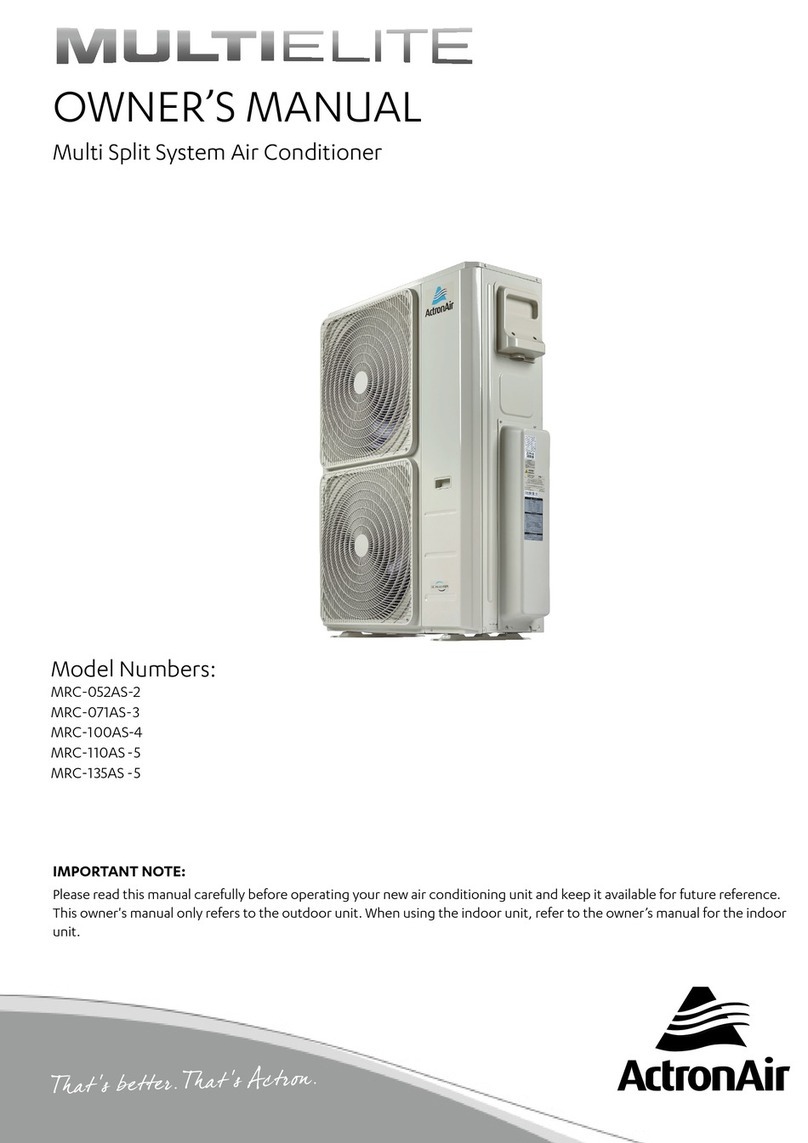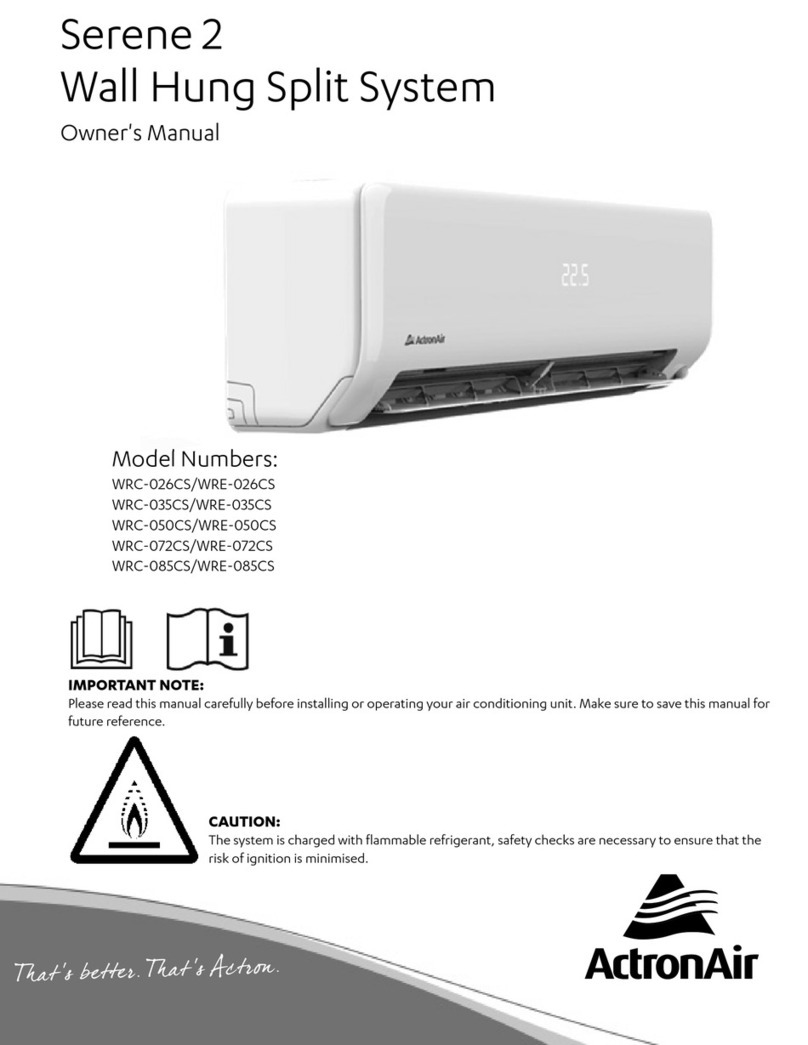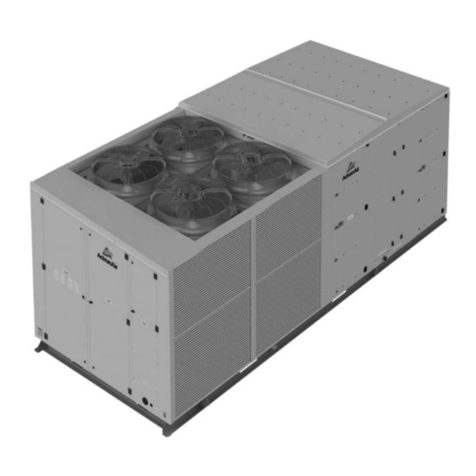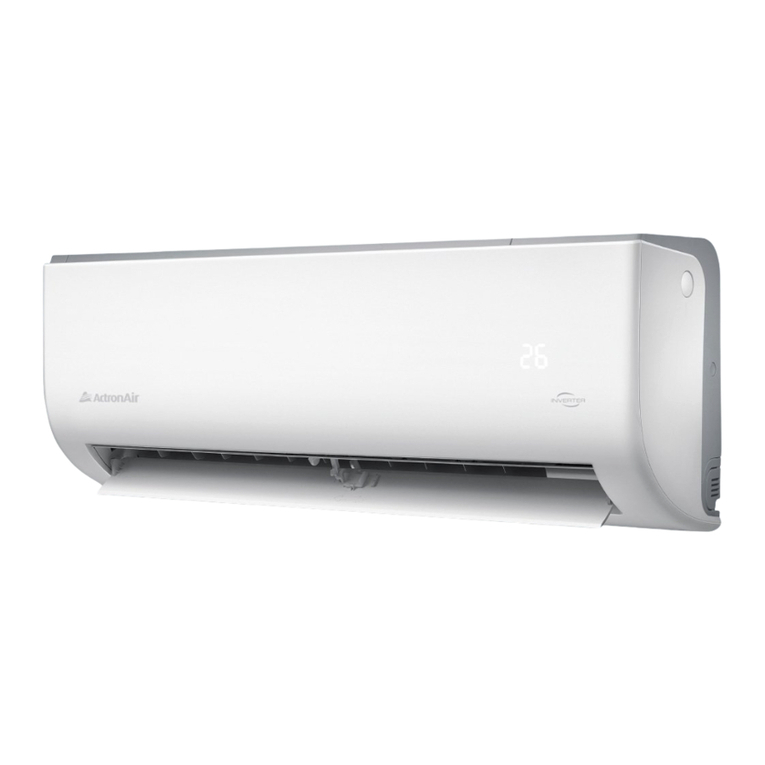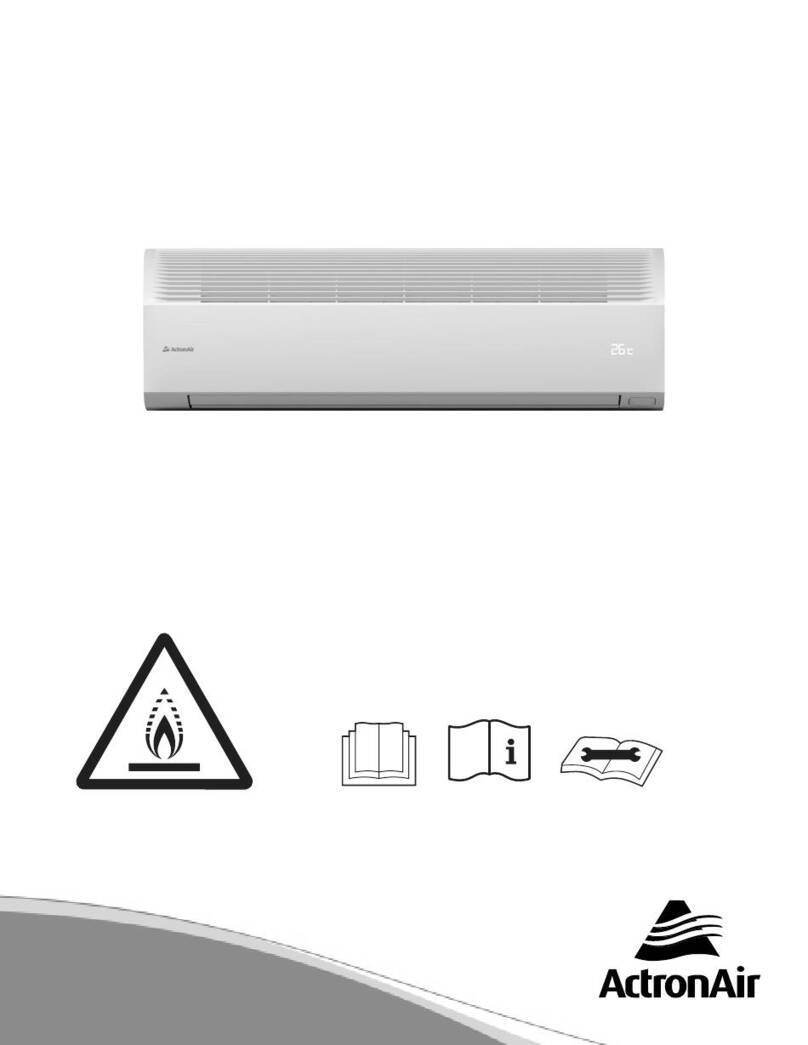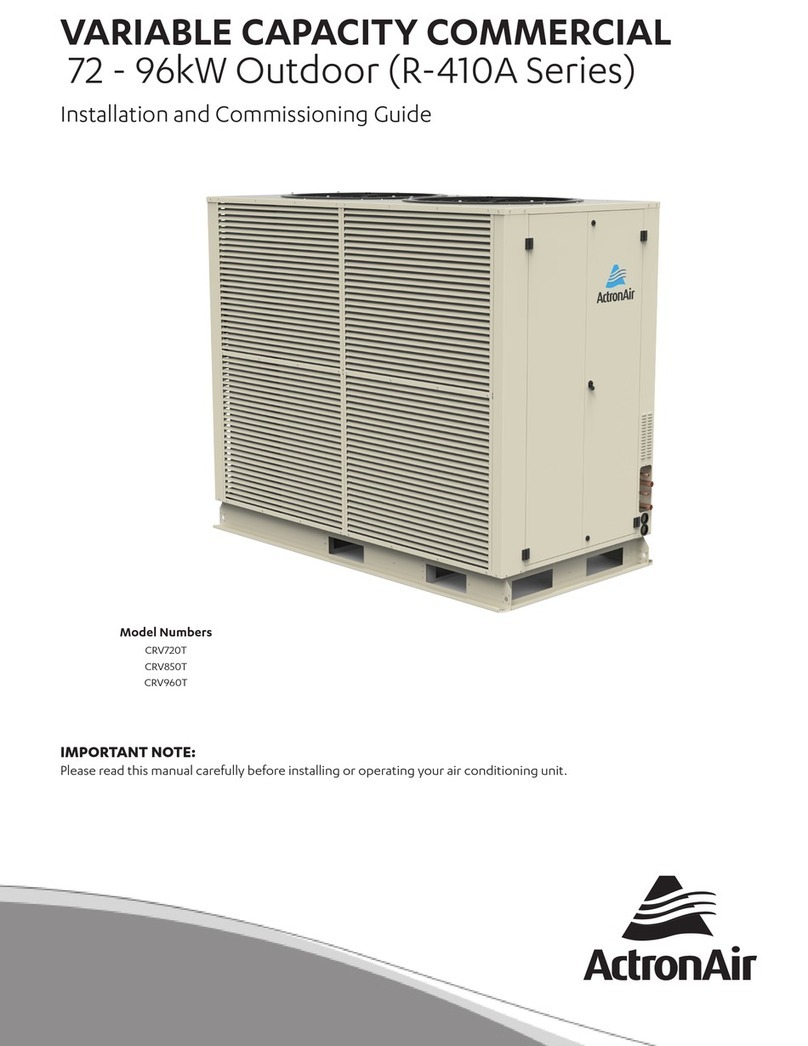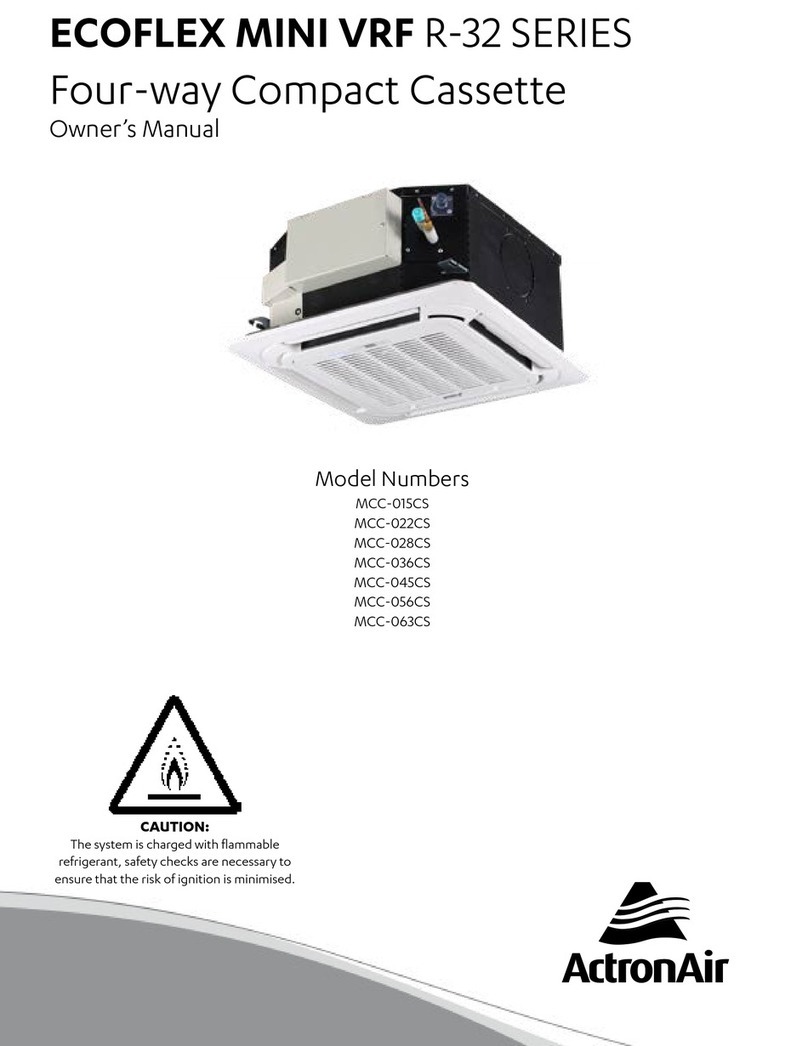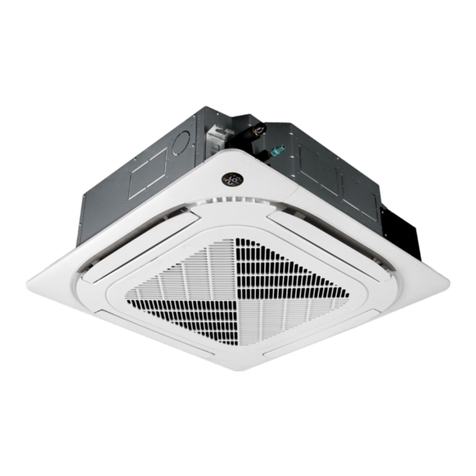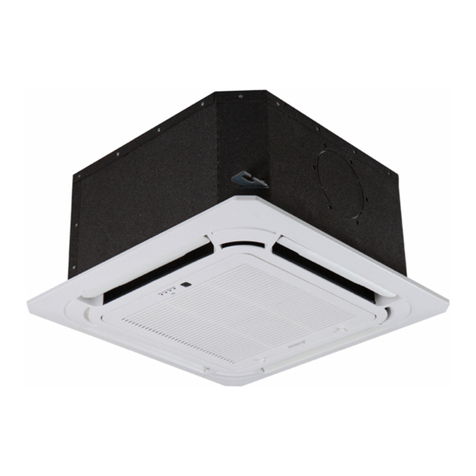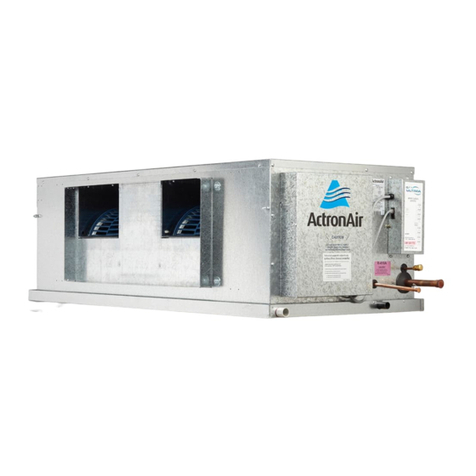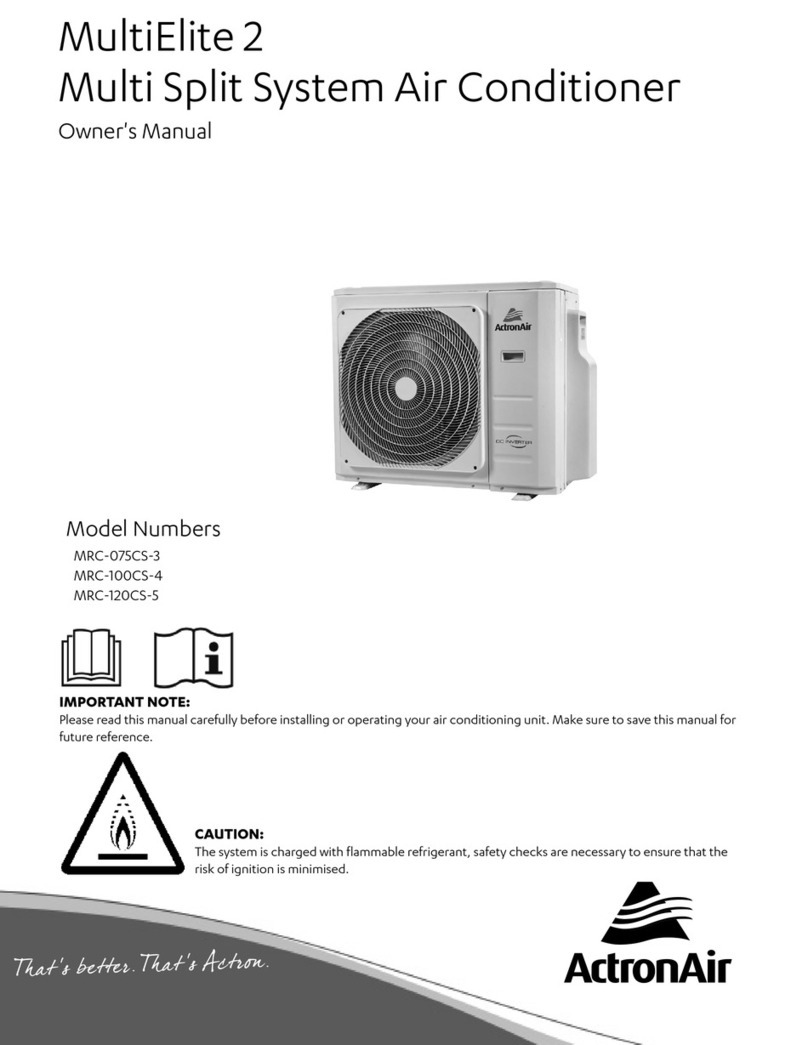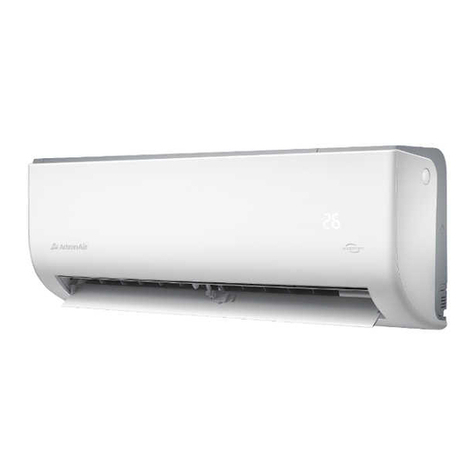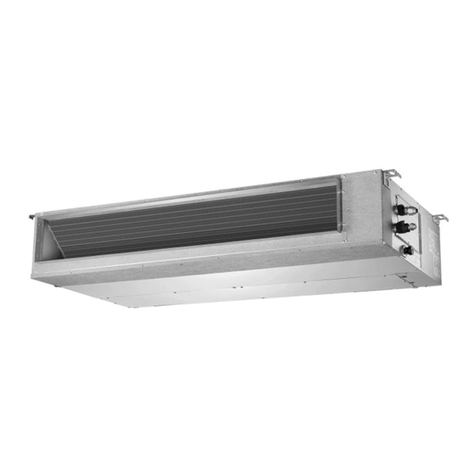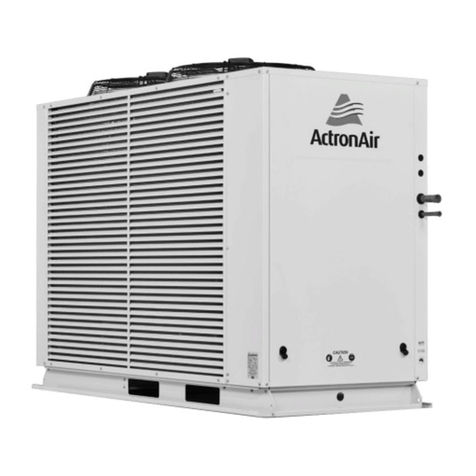
05
ActronAir is constantly seeking ways to improve the design of its products, therefore specifications are subject to change without notice.
Copyright © 2019 Actron Engineering Pty. Ltd.
Installation and Commisioning Guide ESP Platinum QUE - Three Phase
WARNING
EC Motors are fitted with high power capacitors and can have dangerous residual voltages at motor terminals after power has
been isolated. Wait at least 5 minutes after power isolation and test for any residual voltage before beginning service work.
CAUTION
Beware of Rotating Fans!
Ensure that indoor & outdoor fans are isolated and have come to a complete stand still before servicing the equipment. Beware of
pinch point and sharp edges which can cause cutting injury. Secure the fans against accidental contact.
Always wear appropriate PPE and remove any dangling jewellery and protect long hair by wearing a cap. Ensure that no loose
clothing can be caught / entangled in moving parts.
VISUAL INSPECTION & WORK ASSESSMENT
Work areas and conditions must first be assessed and evaluated for any potential hazardous conditions. It is also important to be
familiar with the unit parts and components before proceeding with any service task.
04.Installation Information
All service technicians handling refrigerant must be licensed to handle refrigerant gases.
Recover and Recycle Refrigerants
Never release refrigerant to the atmosphere! It is an offence in Australia to do so. Always recover, recycle and reuse
refrigerants. When removing from the system, properly contain and identify refrigerants in its dedicated container for proper
disposal and/or storage. Always consider the recycle or reclaim requirements of the refrigerant before beginning the recovery
procedures. Obtain a chemical analysis of the refrigerant if necessary. Refer recovered refrigerant and acceptable refrigerant
quality to existing standards and regulations.
Refrigerant Handling and Safety
Consult the refrigerant manufacturer’s safety data sheet (SDS) for information on proper handling and to fully understand
health, safety, storage and disposal requirements. Use the approved containment vessels and refer to appropriate safety
standards. Comply with all applicable transportation standards when shipping refrigerant containers.
Service Equipment and Recovery Procedures
Always use refrigerant reclaiming equipment in order to minimise refrigerant emissions. Use equipment and methods which
will pull the lowest possible system vacuum while recovering and condensing refrigerant. Equipment capable of pulling a
vacuum of less than 500 microns is required.
Do not open the system to the atmosphere for service work until refrigerant is fully removed and/or recovered. Perform
refrigeration system evacuation, prior to charging, in accordance with AIRAH / IRHACE Refrigerant handling code of practice.
Let the unit stand for 1 hour and with the vacuum not rising above 500 microns. A rise above 500 microns indicates a leak from
the system and a leak test is required to locate and repair any leak.
CAUTION
A leak test is always required on any repaired section of the refrigeration system.
Charge refrigerant into the system only after the equipment does not leak or contain moisture. Ensure that R410A is only
charged in liquid form. Take into consideration the correct amount of refrigerant charge specified for the system to ensure
efficient unit operations. When charging is complete, reclaim refrigerant from charging lines into an approved refrigerant
container. Seal all used refrigerant containers with approved closure devices to prevent unused refrigerant from escaping to
the atmosphere. Take extra care to maintain all service equipment directly supporting refrigerant service work such as gauges,
hoses, vacuum pumps and recycling equipment.

